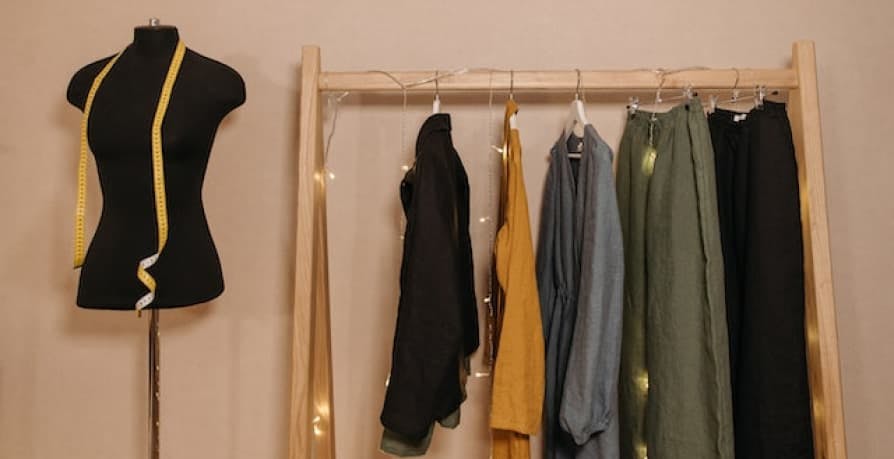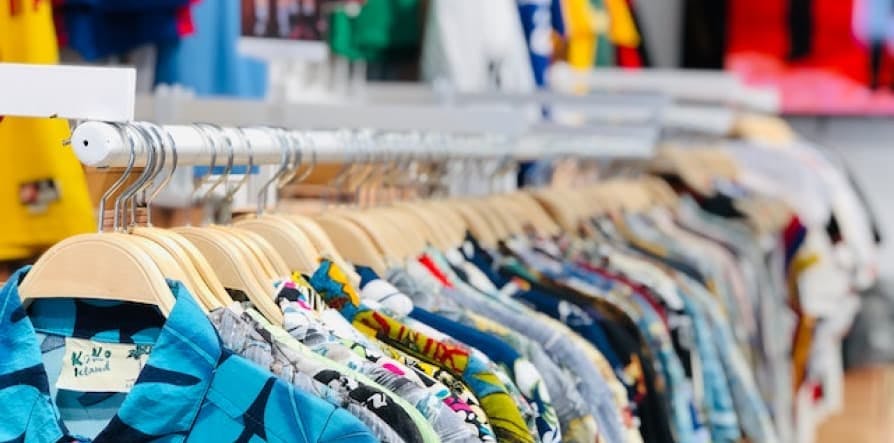ESG / CSR
Industries
Sustainability is Trendy: Fashion Laws to Know in 2024



Fashion isn’t just flirting with sustainability anymore – it’s a full blown relationship. As people begin to recognise how much the fashion industry has contributed to excessive waste, consumption, and emissions – continents on both sides of the pond are making efforts to create change in the fashion industry for the future of the environment.
What are some of the new sustainable fashion laws to be implemented, and how can they help the world promote sustainability through the fashion industry while fighting against climate change?

What is Sustainable Fashion?
Sustainable fashion is when clothing is made whilst keeping environmental measures in mind: such as mitigating the use of excessive water, reducing the need for chemicals in fertilisers used to grow raw materials used in textile factories (i.e., cotton), and striving for energy efficient measures in both the production and lifespan of the garment.

Sometimes, sustainable fashion is referred to as slow fashion – as it attempts to counteract the negative effects of fast fashion by improving supply chains, protecting animals and the environment throughout the production process, and encouraging quality over quantity.
What is Fast Fashion?
The desire to implement these new sustainable fashion laws stems from the exponential growth in both production and sales of fast fashion.
Fast fashion refers to mass produced, low-priced clothing that captures the current fashion trends on the runway without breaking the bank. Fast fashion garments are produced quickly so that a brand can be viewed as “trendy” and gain a customer base.
Fast fashion gets its name for being, well – fast. From start to finish, fast fashion is a speedy process – from designing, production, distribution, and rapid-fire marketing – all so that these garments are made while trends are still surfing social media, so that brands can sell them for profit while they remain relevant. In short, fast fashion is the antithesis of slow fashion – where the latter strives to provide timeless, quality garments.

Fast fashion is notoriously known for being horrendous for the environment. Due to the sped-up-nature of fast fashion – it conveys the unsustainable ideal of superfluous consumption. In other words, fast fashion promotes the idea that the amount of clothes we already have will never be enough. People are attracted to the idea of being able to purchase more stylish items for a cheaper price, even if the lifespan or environmental durability of the item isn’t justified.
The textile industry contributes to an enormous amount of waste through the production of fast fashion, as fast fashion isn’t biodegradable and accentuates the use of micro plastics, water usage, and energy consumption for production. The dependence on these non-renewable resources contributes to excessive greenhouse gas emissions which continue to pollute the atmosphere.
Not only is most fast fashion not biodegradable, but the industrialization of fast fashion impacts water usage, micro plastics, and energy consumption.
The good news is, more and more people are becoming aware of the deleterious effects of fast fashion, and are striving to make a change in the media to promote and incorporate sustainable, slow fashion into society. This growing awareness on the importance of sustainable fashion has resulted in a series of new sustainable laws for fashion to be implemented throughout both the United States and the European Union.
Why are the new sustainable laws for fashion necessary?
The bottom line is that fashion companies are not making the changes necessary for sustainability themselves, and therefore – it’s up to the government to provide them with the incentive, as consumers should not bear full responsibility for contributing to the unsustainable measures in the fashion industry.
It’s similar to how plastic is extremely difficult to recycle, and not at the fault of the consumer – but because the plastic industry has not done its part to make recycling more accessible or understandable for the average consumer.
Climate change is upon us, and getting worse – it’s up to the government to implement the measures necessary to provoke true change throughout the fashion industry, as consumers will continue to remain most concerned about the price tag of the garment – and not what happened behind the scenes for it to reach the clothing rack they found it on.

What are some sustainable fashion laws implemented in the European Union?
Europe is known for its efforts to promote environmentally friendly measures across the board, from finances to fashion. Even without jurisdiction from the European Union, many countries throughout the bloc have already established efforts to improve sustainability amongst the fashion industry – such as France requiring more detailed clothing labels, Norway and Germany requiring companies to share their environmental impacts, and Britain and the Netherlands investigating big name brands for greenwashing.
However, the E.U. has created a few potential measures as a whole to encourage the fashion industry to reduce their environmental impact. For instance, the E.U. has proposed the ESPR – otherwise known as the Eco Design for Sustainable Products. This directive would strive to improve transparency regarding fashion garments on their durability, capability to be recycled, and amount of sustainable raw materials used in the garment itself. ESPR would also demand businesses to disclose how much waste if unsold fashion items are taken off the market, but it may be a while until these sustainable measures to encourage slow fashion can take place – as the directive may not be officially implemented until 2025.
Another proposal by the European Union is Corporate Sustainability Due Diligence, which will request enterprises with more than 500 employees or 150 million euros in sales within the bloc to ensure human rights are met, mitigate further pollution, and prevent negatively impacting existing biodiversity. This potential directive will help ensure that the complex supply chains of the fashion industry pertain to the sustainable measures necessary for the E.U. to achieve their environmental targets. Also, it will help consumers within the E.U. better understand the production process behind the clothes they buy – and if it's a fashion brand they feel comfortable continuing to support. This will ultimately help encourage companies to implement slow fashion values into their business model.
Finally, the E.U. has proposed the Unfair Commercial Practices Directive – which will aim to better regulate how messages are conveyed to consumers in order to prevent allegations like greenwashing. Therefore, the directive will help to encourage slow fashion by incentivizing companies to alter their production line and supply chains so that they can truly be labeled as eco-friendly garments.

In fact, the Unfair Commercial Practices Directive will not only pertain to the fashion industry, but all products sold throughout the European Union. The directive could be implemented by late 2025 or early 2026, and companies who do not comply with the directive could face fines or even worse – a bad reputation.
The European Union is known for setting environmental targets that set the bar for sustainable measures like slow fashion high.
How has the U.S. aimed to improve the sustainable measures necessary in the fashion industry, on their end?
What are some of the proposed legislative measures for sustainable fashion in the United States?
Laws to change the fashion industry have been sweeping across the United States, too. California has been on the top of the environmental game lately, recently announcing a plethora of new climate legislation to propel the state towards true environmental change. One of those many new laws was to protect the rights of garment workers in the fashion industry.
However, the most notable efforts to encourage sustainability in the fashion industry include two new acts: The FABRIC Act, The Fashion Act, and the Fashion Workers Act.
The FABRIC Act, short for the Fashioning Accountability and Building Real Institutional Change Act – is the first federal fashion bill to be implemented in the United States. As revolutionary as this sounds, it hasn’t moved mountains yet – as it’s still being reviewed to even get the chance to sit on the president’s desk. The goal of the FABRIC Act is to ensure fair working rights for those in the garment industry, such as providing fair hourly wages, fines for violating labor laws, and demand records to be kept throughout the fashion industry. The FABRIC Act will also incentivise businesses to bring their garment production back to the United States by offering a thirty percent tax reduction, as doing so will reduce the need for importing garments and in turn – help to reduce excessive emissions from unnecessary air travel.

The Fashion Act, otherwise known as the Fashion Sustainability and Social Accountability Act – is a bill proposed by the state of New York that, if passed, would require big name fashion brands to become utterly transparent regarding their environmental and social impacts. Brands such as Prada, Armani, and even lower-tier fast fashion brands like Zara will have to delineate measures like their carbon footprint, supply chain, and treatment towards their employees to the public. The bill would demand that any company that has more than one hundred million dollars in revenue to comply with the Fashion Act, and consequently require them to reduce the emissions and environmental impacts illustrated in their reports. Ultimately, the Fashion Act will place the responsibility of sustainable fashion on the company, rather than the consumer.
Lastly, The Fashion Worker’s Act will strive to help models throughout the fashion industry – by providing them with labor laws not seen before. Most notably, the Fashion Worker’s Act will even help those who don’t walk the runway – such as hair and makeup artists, stylists, and social media fashion influencers. Its official decision is still awaited by the state of New York.
It is clear that the United States has proposed several measures to provide well-rounded improvement in the fashion industry – but even if passed, will they be enough to implement sustainability to the measure it must be to mitigate further environmental damage?
Will these sustainable fashion laws be enough to change the fashion industry?
Many of the new measures being proposed or currently implemented to improve the fashion industry possess potential, but still don’t get to the root of the problem – fast fashion is still legal. It’s similar to how both the U.K. and California aim to put an end to gasoline-powered transportation: by banning the purchasing of gars that depend on these deathly-to-the-atmosphere fossil fuels.
These new sustainable fashion laws will definitely aid in the industry’s transition to sustainability – but it isn’t the surefire light switch that the world needs to mitigate waste and climate change. Slow fashion can only become the norm if fast fashion becomes obsolete. However, baby steps are what prepare us for a life-long marathon – and these new legislative measures for the fashion industry are exciting, as the efforts to improve sustainable fashion can only get better from here.
What about Greenly?
If reading this article about the new sustainable laws regarding fashion has made you interested in reducing your carbon emission to further fight against climate change – Greenly can help you!
Greenly can help you make an environmental change for the better, starting with a carbon footprint assessment to know how much carbon emissions your company produces.
Click here to learn more about Greenly and how we can help you reduce your carbon footprint.





